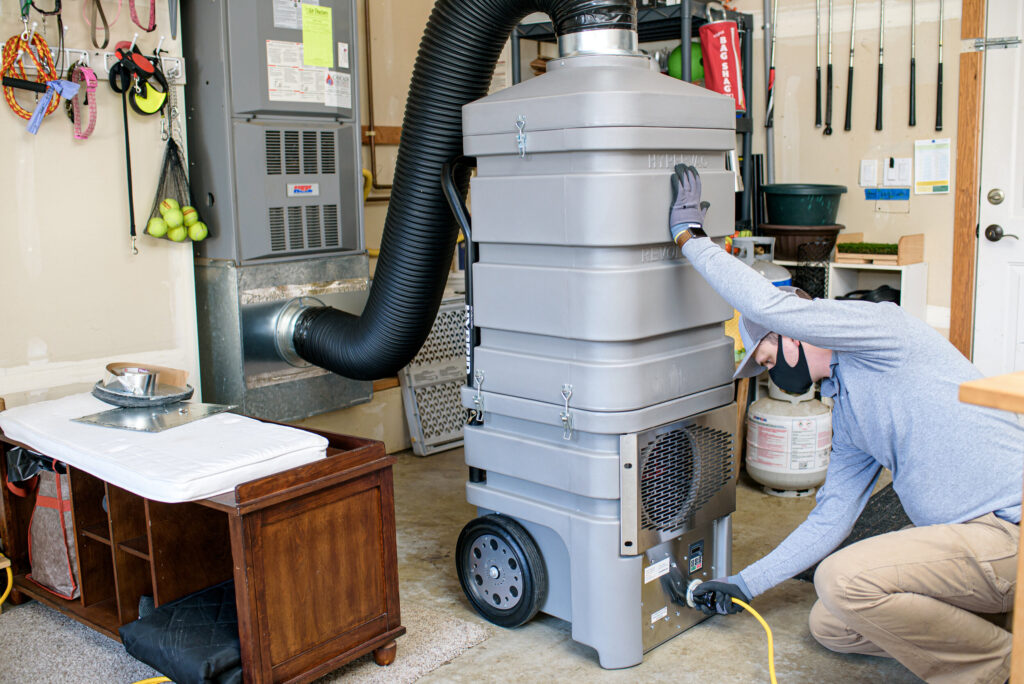Quick search
CTRL+K
Quick search
CTRL+K
Air duct cleaning has always been a crucial aspect of maintaining healthy indoor air quality and ensuring energy-efficient HVAC systems. However, as technology continues to evolve, the air duct cleaning industry has also experienced significant advancements. These innovations not only make the cleaning process more efficient but also improve its effectiveness, helping homeowners and businesses enjoy cleaner, healthier air.
In this blog, we will explore the latest advances in air duct cleaning technology, focusing on the tools, techniques, and trends that are shaping the future of this essential service.
Before diving into the innovations, it’s important to understand why these advancements are significant. Traditional air duct cleaning methods often relied on manual tools and basic equipment, which could sometimes miss contaminants or fail to provide a thorough cleaning.
With modern technology, air duct cleaning has become more precise, effective, and environmentally friendly. These advances help reduce energy consumption, lower costs, and minimize health risks associated with dirty air ducts.

Innovative tools have revolutionized how air ducts are cleaned, ensuring that even the most stubborn dirt and debris are removed.
Robotic systems equipped with cameras and cleaning attachments are among the most significant breakthroughs. These devices can navigate through ducts with precision, capturing live footage to identify areas with heavy debris buildup. Once identified, the robotic arms can clean these areas thoroughly using brushes or suction mechanisms.
Modern vacuum systems now feature high-efficiency particulate air (HEPA) filters, which can trap even microscopic particles. These vacuums are essential for removing allergens, mold spores, and fine dust from air ducts, ensuring improved indoor air quality.
New cleaning techniques are being developed to address common challenges in air duct cleaning, such as mold growth, stubborn debris, and odor removal.
Ultraviolet-C (UV-C) light technology has become a popular solution for eliminating bacteria, viruses, and mold within air ducts. By installing UV-C lamps in HVAC systems, these harmful microorganisms are destroyed, preventing their spread throughout the home.
Sanitization involves the use of non-toxic cleaning agents to kill germs and neutralize odors in air ducts. Unlike traditional cleaning methods that focus solely on debris removal, sanitization ensures that the ducts are free from harmful microorganisms and unpleasant smells.
Also Read : How AI is Evolving: A prediction for the next decade
Advancements in technology aren’t limited to cleaning tools; they also include smart systems that monitor and diagnose issues within air ducts.
Internet of Things (IoT) technology has made its way into the HVAC industry, enabling real-time monitoring of air quality and system performance. These systems use sensors to detect dirt buildup, airflow restrictions, and humidity levels within ducts.
Thermal imaging cameras are now being used to identify leaks and insulation gaps in air ducts. By pinpointing areas where air is escaping, technicians can address inefficiencies and prevent energy waste.
As sustainability becomes a priority, the air duct cleaning industry is adopting eco-friendly practices to minimize environmental impact.
Many companies are now using biodegradable and chemical-free cleaning agents that are safe for the environment and indoor air quality. These solutions are particularly beneficial for families with children or pets.
Modern air duct cleaning equipment is designed to consume less energy while maintaining high performance. For example, robotic systems and HEPA vacuums are built with energy-saving motors that reduce electricity usage.
Artificial intelligence (AI) and automation are playing an increasingly important role in streamlining the air duct cleaning process.
AI-powered systems can analyze data from HVAC sensors to predict when air ducts need cleaning. By anticipating issues before they arise, homeowners can avoid costly repairs and ensure consistent air quality.
Automated robots are taking over repetitive cleaning tasks, allowing technicians to focus on more complex issues. These robots can clean ducts autonomously, reducing labor costs and improving efficiency.
The future of air duct cleaning looks promising, with ongoing research and development aimed at making the process even more efficient and accessible.
As smart homes become the norm, air duct cleaning systems will likely integrate seamlessly with home automation platforms. This means homeowners will be able to schedule cleanings, monitor air quality, and receive updates through their smart devices.
AI will enable cleaning processes to be tailored to individual homes or businesses, taking into account factors like size, usage, and specific air quality concerns.
The latest advances in air duct cleaning technology are transforming the industry, making it more effective, efficient, and environmentally friendly. From robotic systems and HEPA vacuums to UV-C light and AI-driven solutions, these innovations are addressing the growing demand for cleaner, healthier indoor air.
Whether you’re a homeowner or a business owner, staying informed about these advancements can help you make better decisions for maintaining your HVAC system and improving your indoor environment. With technology evolving at a rapid pace, the air duct cleaning industry is set to deliver even greater benefits in the years to come.
By embracing these innovations, you’re not just investing in cleaner air but also contributing to a more sustainable and healthier future.
© All rights reserved.